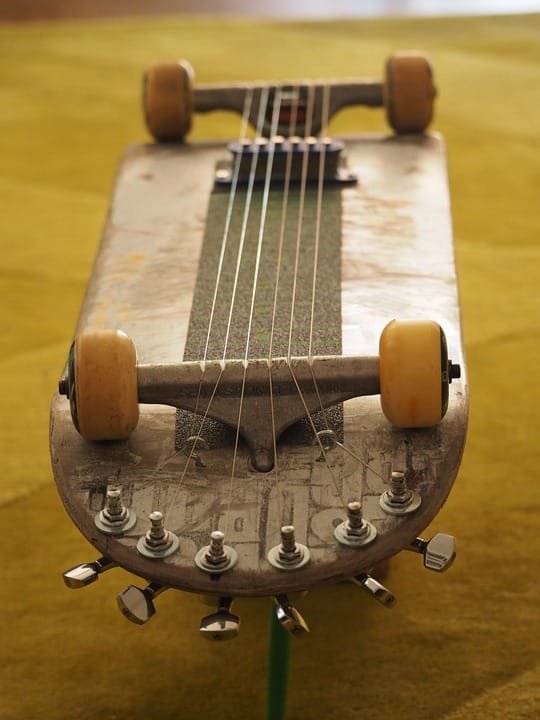The Sustainable Fashion Revolution: A Journey to a More Conscious Wardrobe
As I stand in front of the mirror, surrounded by the clothes that fill my closet, I’m reminded of the staggering statistics that fast fashion has left in its wake. The fashion industry is one of the largest polluters in the world, with the average American generating 82 pounds of textile waste per year. The thought of contributing to this problem, even unintentionally, is overwhelming. But it’s not just the environmental impact that concerns me – it’s the social and moral implications that come with supporting a system that prioritizes profit over people.
The Dark Side of Fast Fashion
Fast fashion’s rapid rise to prominence has led to a culture of disposability, where clothes are designed to be worn once and discarded. This mentality has resulted in:
- Over 12.8% of global greenhouse gas emissions coming from the fashion industry (Ellen MacArthur Foundation)
- 85% of textiles ending up in landfills each year (United Nations Environment Programme)
- The collapse of factories, like the Rana Plaza disaster in 2013, which killed over 1,100 workers (Clean Clothes Campaign)
The consequences of fast fashion are far-reaching and devastating. It’s a system that’s unsustainable, unsustainable, and, quite literally, killing the planet.
The Power of Sustainable Fashion
But there’s a better way. Sustainable fashion is not just a trend – it’s a commitment to conscious living and self-expression. By adopting eco-friendly practices, we can reduce our environmental footprint, support fair labor practices, and create a more sustainable future.
Eco-Friendly Materials
One of the most significant ways to reduce our impact is by choosing eco-friendly materials. Look for:
- Organic cotton, which uses natural farming methods and reduces pesticide use
- Recycled polyester, which repurposes plastic waste
- Hemp, a highly durable and sustainable fabric
Slow Fashion
Slow fashion is all about quality over quantity. By investing in timeless pieces, we can reduce our consumption and extend the life of our clothes. Here are some tips to get you started:
- Buy second-hand – thrift stores, online marketplaces, and consignment shops are treasure troves of unique finds
- Invest in quality – look for well-made, durable pieces that will last
- Repair and maintain – learn to mend and care for your clothes to extend their life
Upcycling and Repurposing
Upcycling is the process of transforming old or discarded materials into something new and valuable. Here are some creative projects to get you started:
- Turn old t-shirts into reusable bags
- Transform jeans into a quilt or patchwork blanket
- Create a planter from an old plastic bottle
Tips for Sustainable Consumers
- Research brands – look for certifications like GOTS (Global Organic Textile Standard) and Oeko-Tex
- Check labels – opt for clothes with minimal packaging and sustainable materials
- Buy in bulk – purchasing larger quantities can reduce waste and packaging
The Journey to Sustainable Fashion
My transition to sustainable fashion wasn’t easy, but it’s been incredibly rewarding. I’ve discovered the joy of eco-friendly brands, thrift shopping, and DIY clothing. Here are some of my favorite sustainable fashion brands:
- Patagonia – a pioneer in sustainable fashion, offering eco-friendly materials and practices
- People Tree – a fair trade and organic cotton brand that supports small-scale farmers
- H&M Conscious – a sustainable fashion line that uses recycled materials and reduces waste
Conclusion
Sustainable fashion is a journey, not a destination. It requires commitment, curiosity, and a willingness to learn and adapt. By making conscious choices, we can reduce our impact on the environment, support fair labor practices, and create a more sustainable future.
Frequently Asked Questions
Q: How can I start my sustainable fashion journey?
A: Start by researching eco-friendly brands, thrift shopping, and DIY clothing. Begin with small changes, like swapping one item for a sustainable alternative.
Q: What are some affordable sustainable fashion options?
A: Thrift stores, online marketplaces, and consignment shops offer affordable and unique finds. Look for sales and discounts on sustainable brands.
Q: How can I extend the life of my clothes?
A: Learn to mend and care for your clothes, and consider upcycling or repurposing old items.
Q: What are some sustainable fashion certifications to look for?
A: GOTS (Global Organic Textile Standard), Oeko-Tex, and Fairtrade are some of the most recognized certifications in the industry.
By embracing sustainable fashion, we can create a more conscious and compassionate world. Join me on this journey, and together, let’s revolutionize the way we think about fashion.








Leave a Reply